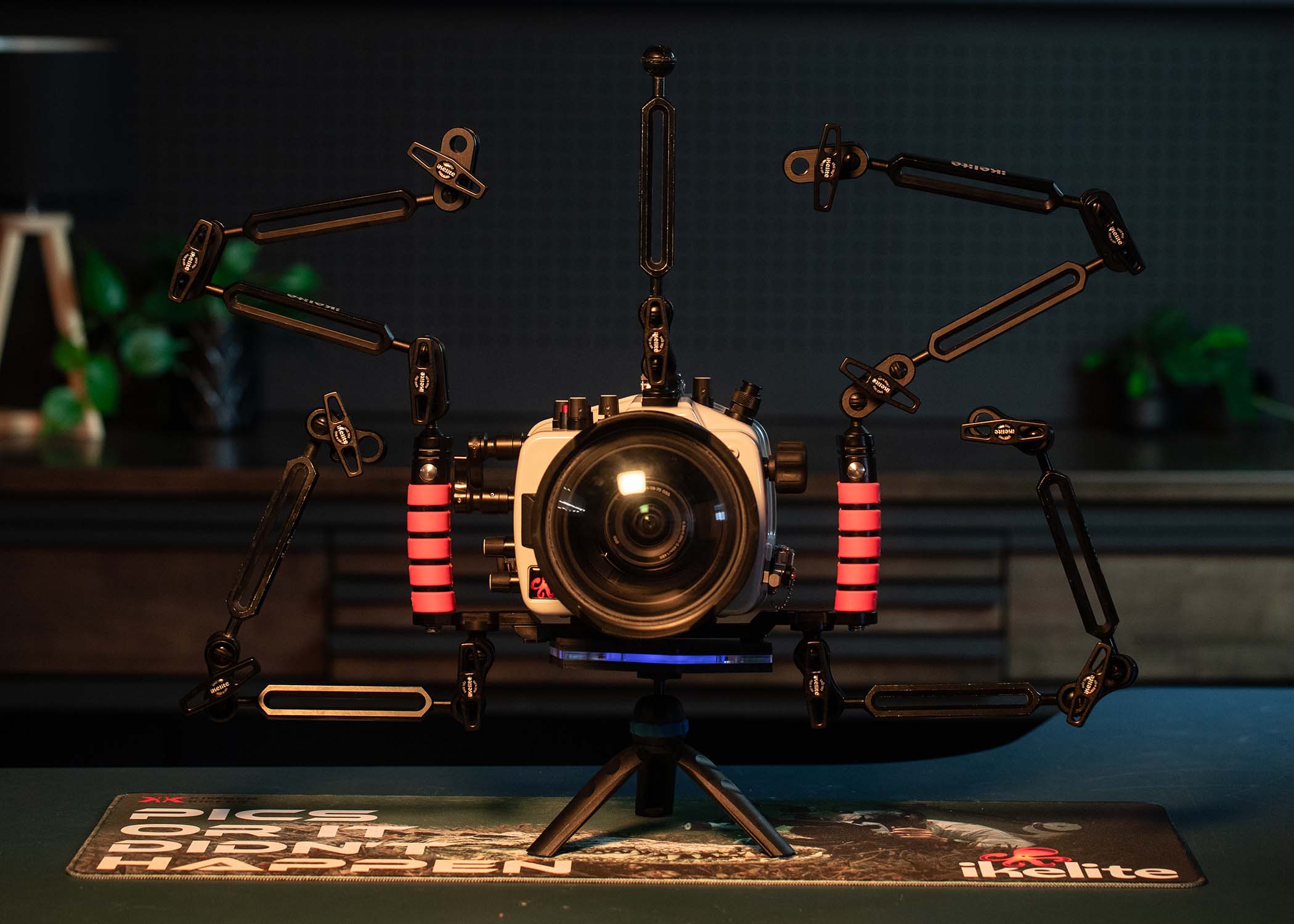By Steve Miller
To get your camera out of automatic mode, it’s necessary to understand the three critical exposure variables: aperture, shutter speed, and ISO. Today we’re going to cover shutter speed and figure out where to set it for the best effect underwater.
What is Shutter Speed?
Think of the camera’s shutter like a set of shutters on a window that open and close. When the shutters are open, they let light into the sensor. When they close, it’s dark. The amount of time the shutter is left open to exposure the image is referred to as the shutter speed. We refer to the shutter speed in seconds – and most often fractions of a second.
On the slow end, 1/60th of a second is a common lower limit for hand held photography. At these slower shutter speeds, small movements of your camera will start to distort your image. Fast moving subjects will have a trail of motion blur behind them.

Different cameras’ shutter speed ranges will vary. Most of this range is unusable underwater.
The Sweet Spot
The metadata from thousands of published images shows that shutter speeds of 1/125 to 1/160th of a second work well about 90% of the time underwater. These speeds are fast enough to prevent motion blur from camera movement, as well as the movements of most animals that are in a relaxed state.
Typically I start with 1/160 and leave it at that setting until I need extra reach in my aperture range.
Relationship to ISO and Aperture
At the faster end, you will dramatically limit the amount of light that hits your sensor. If you go from 1/125th to 1/250th, your shutter is only open half as long. You have lost what we call one stop of light.
If you’ve seen my Aperture Tutorial, you will have already heard about the idea of ‘stops.’ When we gain a stop, the amount of light has doubled. When we lose a stop, the amount of light has been cut in half.
When you lose light by shooting a faster shutter speed, you will need to make up the light by using a larger aperture or a lower ISO.

When shooting in dark environments like cenotes and caverns, it will be a balancing act between ISO and shutter speed to get defined environments and sharp light rays without too much graininess or blur.
Flash Sync Speeds
Another way to add light to your subject is using strobes. No matter how fast your shutter is moving, your strobes are typically firing only a fraction of the time the camera is actually capturing the image. So your strobes will actually help to freeze a subject’s motion underwater even at reasonable shutter speeds like 1/125 or 1/160.
But your camera actually has a limit at which your strobe syncs with the camera. The limit is caused by the shutter mechanism. I’ll save the explanation of this phenomenon for another video on shutter synchronization. Suffice it to say that your camera will have a maximum shutter speed for use with flash, and that’s typically around 1/200 or 1/250. The fastest sync speed on the market right now is the Sony a1 which has a maximum sync speed of 1/400.
High Shutter Speeds
There are a few situations underwater where even faster shutter speeds are necessary.
The most obvious is a fast moving subject. When I have a pod of dolphins swimming around me I will be using a minimum of 1/500 and often 1/640th of a second or faster to freeze the motion.
Don’t even bother with strobes. Animals like wild dolphins are typically swimming more than an arm’s reach away, your flash isn’t going to be effective anyway.
Something that moves even faster than dolphins is light, making fast shutter speeds effective when you want to capture dramatic light rays. If you’re shooting a lot at the surface of the water, faster shutter speeds will also keep the water line sharp on over-under shots where half of the frame is out of the water.

Ditching strobes when shooting fast moving animals will also make it much easier to maneuver yourself through the water quickly.
Slow Shutter Speeds
A slower shutter speed on the other hand, will make it look more like the sky is melting into the sea.
Shutter speed is your best tool for creating a sense of movement. Slower shutter speeds can bring a softness to your image or to capture deliberate motion blur.
Slow shutter speeds with flash require rear curtain sync to stop the subject in a pleasing manner. Ikelite TTL circuitry automatically switches to rear curtain sync at slow shutter speeds for this reason.
Everyone’s portfolio is different. For me, the very slow or very fast shots represent less than 10% of my catalog. Shutter speed is important to my underwater photography, but I don’t overthink it.
A good rule of thumb is to start with your shutter speed at 1/160 and adjust your aperture as necessary. Go faster if it's super bright out or you see that pod of dolphins about swim by.

When you combine a strobe flash with deliberate panning or spinning of the camera, slow shutter speeds can be used to highlight a particular portion of the frame.
Happy Shooting!
If you want free one-on-one help with your photos, send some examples to ikelite@ikelite.com. Until then, happy shooting!
 Ambassador Steve Miller has been a passionate teacher of underwater photography since 1980. In addition to creating aspirational photos as an ambassador, he leads the Ikelite Photo School, conducts equipment testing, contributes content and photography, represents us at dive shows and events, provides one-on-one photo advice to customers, and participates in product research and development. Steve also works as a Guest Experience Manager for the Wakatobi Dive Resort in Indonesia. In his "free" time he busies himself tweaking his very own Backyard Underwater Photo Studio which he's built for testing equipment and techniques. Read more...
Ambassador Steve Miller has been a passionate teacher of underwater photography since 1980. In addition to creating aspirational photos as an ambassador, he leads the Ikelite Photo School, conducts equipment testing, contributes content and photography, represents us at dive shows and events, provides one-on-one photo advice to customers, and participates in product research and development. Steve also works as a Guest Experience Manager for the Wakatobi Dive Resort in Indonesia. In his "free" time he busies himself tweaking his very own Backyard Underwater Photo Studio which he's built for testing equipment and techniques. Read more...
Additional Reading
Underwater Exposure Explained | Aperture Settings [VIDEO]
Setting the Right Frame Rate and Shutter Speed for Your Underwater Footage [VIDEO]
Light Painting Underwater Tips and Technique
Manual White Balance for Underwater Still Photography
5 Tips for a Successful Freediving Photoshoot
Up Close and Personal: A Guide to Underwater Animal Portraits











![Underwater Exposure Explained | Shutter Speed Settings [VIDEO]](http://www.ikelite.com/cdn/shop/articles/Shutter_Speed_Explained_Cover.jpg?v=1693569374&width=1500)
![Setting the Right Frame Rate and Shutter Speed for your Underwater Footage [VIDEO]](http://www.ikelite.com/cdn/shop/articles/FPS-video-cover.jpg?v=1690549162&width=2000)
